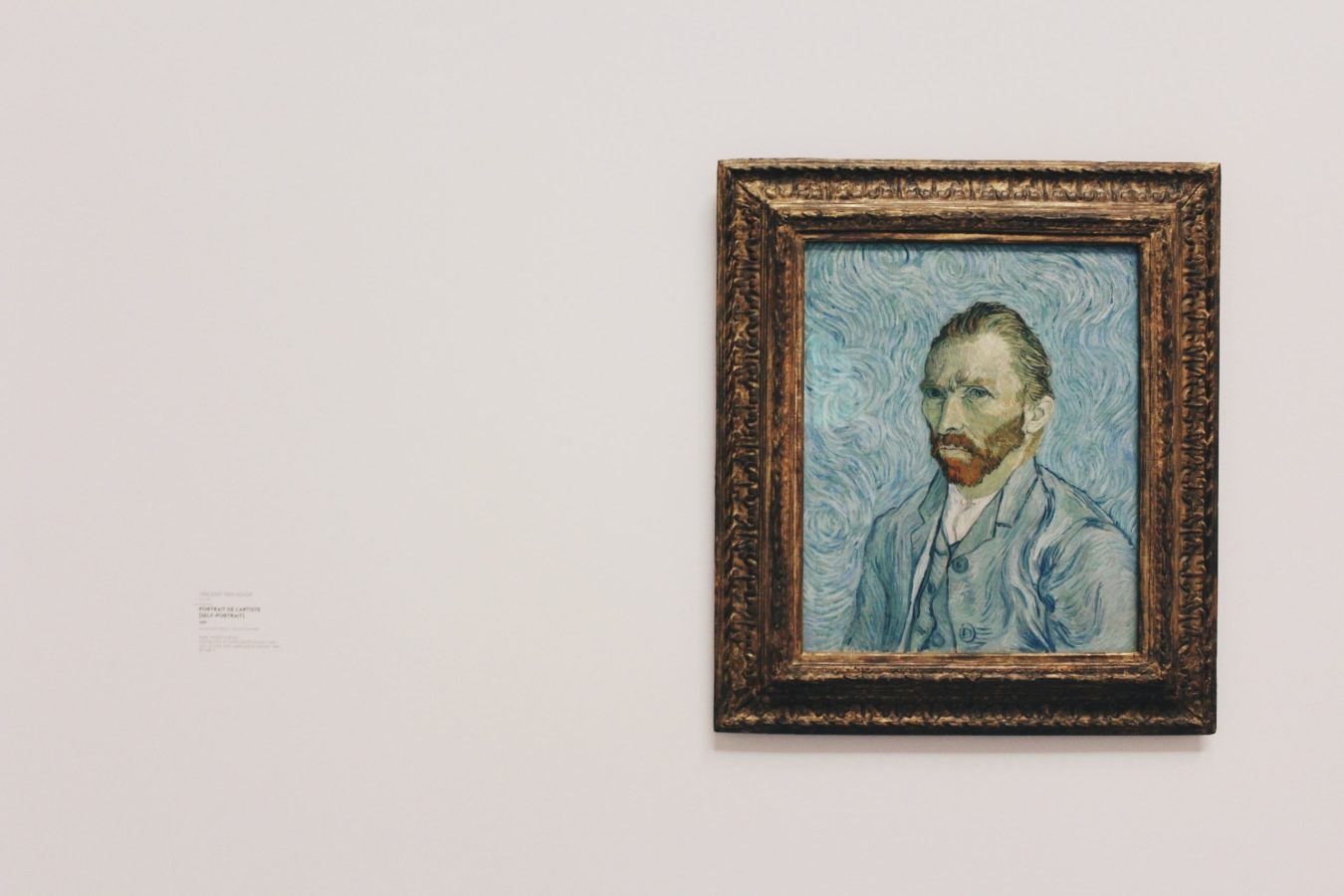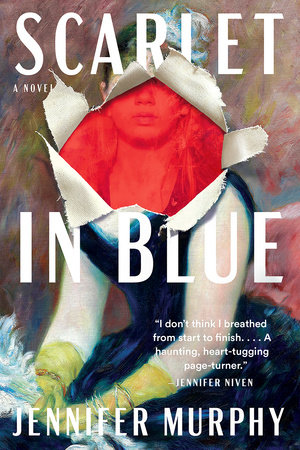It was February of 2014. I had recently finished my debut novel, I Love You More, which would be published that summer. I was in the early phase of formulating a new novel in my head, a shadowy and jumbled process. I kept seeing a mother and daughter on the run from a phantom man, but they felt more like fugitives than mere runners, two innocent souls that through no fault of their own needed to hide or fade from life to survive. As both a writer and artist, I knew of the little-known art term fugitive pigment, paint that fades over time due to light and atmospheric conditions. I was feeling that this term might define their experience. But I wasn’t certain.
At The Chicago Art Institute, while strolling through works by Van Gogh and Matisse and Seurat, I came across an ancillary exhibit entitled Renoir’s True Colors. The exhibit featured duplicate paintings of Pierre Auguste Renoir’s Madame Léon Clapisson. The canvas to my left was noted as the original painted by Renoir in 1883. The one to the right was a digitized reproduction. I was struck by how much brighter the reproduction was. Confused, I began reading the explanation of the exhibit displayed on the wall. When removing the canvas from its frame to clean it, conservators discovered that the painting had significantly faded over time as a result of the artist’s use of fugitive pigments. A few months later, my new novel, Scarlet In Blue, began to take shape.
There is a long tradition of writers exploring art in literature. Why they choose art as a focus is different for each of them. But based on my findings and the ten novels I’ve included below (in publication order), there are also similarities. For readers, there is a hint of synchronicity in these novels, a feeling that we’ve happened upon them for a reason. There is also an eerie fascination, a hope that we will be entering a world that is exotic, that offers the voyeur in us an opportunity to safely watch characters engage in situations that are both beautiful and dangerous. But mostly, these novels do what art itself does best. They intrigue. They seduce. They grab our attention and pull us inside.
Laura by Vera Caspary
Laura Hunt, a successful and alluring young advertising professional, and femme fatale, has been murdered, shot when she answered the door to her apartment. Set in the sophisticated world of New York journalism, the novel has been described as both a detective story and a love story. Told in alternating viewpoints, it begins with the first-person narration of Waldo Lydecker, a prominent journalist and friend of Laura’s, followed by Detective Mark Mcpherson, and then two witnesses. During the investigation, McPherson becomes obsessed with a painted portrait of Laura, falling prey to her wiles even in death. Critics praised the story’s surprising twist ending, and Caspary’s use of multiple perspectives as a device to create unreliable narration. And many, including me, were most drawn to Caspary’s use of a painting to seduce McPherson, and thus readers.
Cat’s Eye by Margaret Atwood
Cat’s Eye tells the story of Elaine Risley, a fictional painter, who returns to her home in Toronto, Canada for a retrospective exhibit. The novel’s title comes from a cat’s eye marble, a special possession Elaine kept from her childhood of playing marbles with her brother. The cat’s eye is a continued motif in her paintings, and she isn’t sure why. Soon after her return to Toronto, lost memories begin to surface of a girl named Cordelia who led a group of girls that treated Elaine cruelly. In honest and elegant prose, Atwood probes the psychological ramifications of bullying on Elaine’s life, from her childhood through her successful painting career, but also, in true Atwood form, uses fiction to deliver timely social commentary. I am a huge Margaret Atwood fan, and this novel doesn’t disappoint.
Girl with a Pearl Earring by Tracy Chevalier
Girl with a Pearl Earring is a historical novel about the Dutch painter Johannes Vermeer, and his painting of the same name. In 1664, following an accident that leaves her father blind, 16-year-old Griet leaves her family home to earn money as a maid in Vermeer’s household. Griet becomes increasingly interested in Vermeer’s paintings and begins mixing and grinding his pigments. Griet soon finds herself mingling with Vermeer’s wealthy patrons… with no way to escape given her status. Chevalier’s reimagining of the story behind Vermeer’s most recognizable painting is a joy to read and offers a look into the art and social structures of the Baroque period.
The Goldfinch by Donna Tartt
Winner of the 2013 Pulitzer Prize for Fiction, The Goldfinch is primarily a coming-of-age story about 13-year-old Theodore Decker whose mother is killed in a terrorist bombing at the Metropolitan Museum of Art, which he survives. Just prior to the bombing, he was fixated on an old man and red-headed girl. On his way out, he comes across the old man, who is dying in the rubble. The man gives him a ring he is to give to a man named Hobie, and points toward The Goldfinch painting, prompting Theo to grab it on the way out. We follow Theo in the years following the bombing, and the hidden theft, which weighs on him more and more heavily as the years go by. Tart’s novel is a complex examination of how tragedy and loss, and one painting, effected the trajectory of a boy’s life.
The Painter by Peter Heller
Peter Heller tells the story of successful fictional painter Jim Stegner, whose life takes a turn when he shoots a man in a bar for making lewd comments about his daughter, a scene which he later paints in an “explosion of colors.” His marriage has also ended. He leaves New Mexico and starts a fresh life in Colorado where he attempts to lose himself in his paintings and fishing. Heller does an amazing job of using his protagonist’s paintings to reflect the violence of his life. The prose has a clean, hard-boiled detective edge to it, instilling the novel with mystery and urgency.
Station Eleven by Emily St. John Mandel
Station Eleven chronicles the effects of a pandemic on the world. The story begins with the death of a famous actor named Arthur Leander who has a heart attack on stage during a production of King Lear. Shortly after the play, a deadly flu ravages the entire globe, killing almost everyone. Fifteen years later, we follow a group of traveling Shakespearian actors, performing around Lake Michigan in the aftermath. The groups’ motto is a line from Star Trek: “Because survival is insufficient.”
Mandel weaves together several seemingly disparate story lines, each with their own cast of characters. While the entire journey is compelling, what I find most extraordinary about this novel is Mandel’s assertion that in a time of unimaginable destruction and loss, it is art that ultimately restores hope.
Georgia by Dawn Tripp
Tripp reimagines the relationship between actual painter Georgia O’Keefe and photographer Alfred Stieglitz. Tripp’s imaginings feel so real that I—a painter and student of art history, who is familiar with the affair between O’Keefe and Stieglitz—believed, or at least wanted to believe, it all to be true. An author’s note prefaces the novel, explaining the detailed research Tripp did in portraying the artists’ relationship and lives. The second paragraph of the novel reads, “This is not a love story. If it were, we would have the same story. But he has his, and I have mine.” These words set the tone for the relationship itself: the initial attraction between O’Keefe and Stieglitz, their passion and turbulence, and their lifelong affair. And along the way, through sheer grit and undeniable talent, Georgia O’Keefe becomes a strong, independent woman and renowned artist. This story and its authoritative prose at times left me breathless.
Little Fires Everywhere by Celeste Ng
The story begins with a house on fire. The house belongs to the Richardson family. The year is 1997. They live in Shaker Heights, an actual neighborhood in Ohio, chosen by Ng because, as Cosmopolitan magazine said (in a quote Ng uses in the book), it is “utopia,” and its residents are well-to-do and “happy.” The story backtracks to a time before the fire. A photographic artist named Mia Warren and her daughter, Pearl, are moving into a rental property owned by the Richardsons. We learn that Mia and Pearl move a lot, for inspiration.
Before long, the Warrens and Richardsons become intertwined in each other’s lives, which leads to strained relations. Tensions escalate when friends of the Richardsons attempt to adopt a Chinese baby that belongs to a friend of Mia’s. And all the while Mia is keeping a big secret. Ng’s characters are so well drawn, we believe they could be our neighbors, and her story of a community divided by opposing beliefs is both heartbreaking and timely.
Still Lives by Maria Hummel
Hummel introduces us to the L.A. art scene and fictional, avant-garde feminist icon Kim Lord, whose new exhibit features compelling and disturbing self-portraits of herself as famous murdered women such as the Black Dahlia, Chandra Levy, and Nicole Brown Simpson. All of L.A. is abuzz with the exhibit’s opening and Hummel’s appearance. But the artist doesn’t show.
The story is told in first person through the eyes of Maggie Richter, who works at the financially struggling Rocque Museum where the exhibition is taking place. What follows is an engaging whodunnit-type mystery surrounding Lord’s disappearance, a commentary on society’s attraction to violence, and the money and secrets inherent in the art industry.
Hummel tells a convincing story of the L.A. art world, grounding it with references to actual famous artists and their art styles. Her bio indicates that she worked as a writer and editor at the Los Angeles Museum of Contemporary Art.
The Silent Patient by Alex Michaelides
Alicia Berenson is a painter, who generally takes painstaking time sketching the images in her paintings beforehand. Out of nowhere, at least that’s how it appears, Alecia brutally murders her husband. Alecia is silent when the police arrive on the scene and doesn’t speak thereafter. She is sentenced to a mental institution where her paintings become more expressive and spontaneous.
Over time the initial sensationalism and interest in the crime fades. But forensic psychotherapist, Theo Faber, remains fascinated by both the crime and the woman. When a position becomes available at the institution where Alecia was sent, Theo applies for the job. The story is told in first person through Theo’s eyes, interspersed with diary entries Alecia made before the murder. The Silent Patient is a compelling account of violence and obsession with a surprising and memorable twist ending.

